How to Check for Battery Drain with a Multimeter (5-Step Guide)
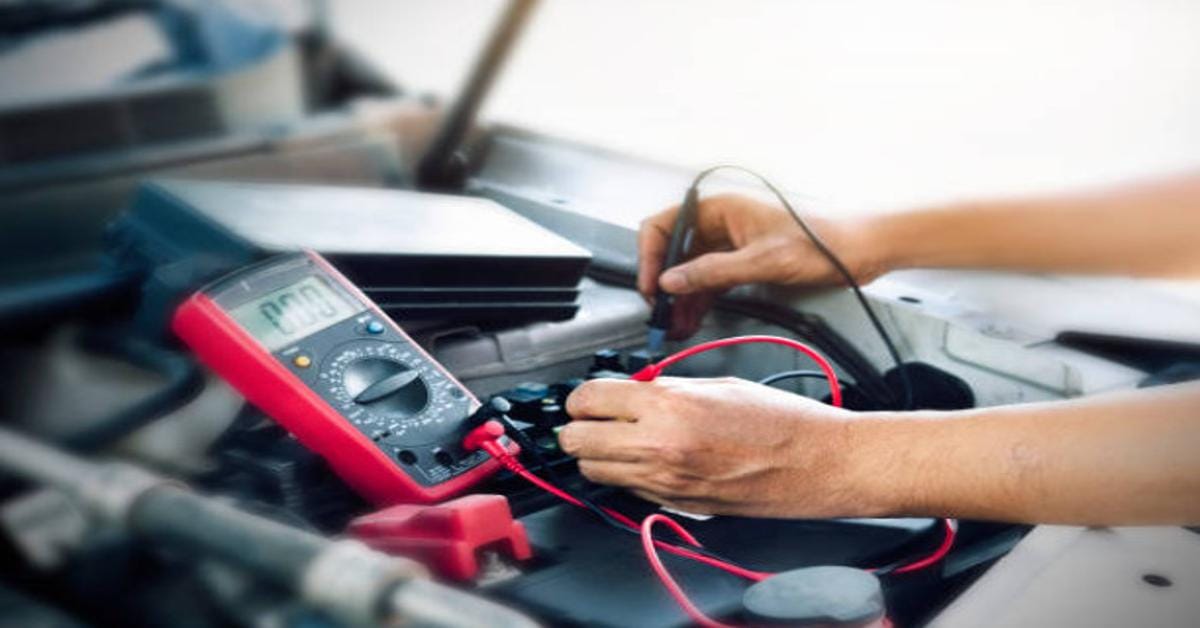
Not many folks think to check their car batteries for voltage drops regularly, but let me tell you; it’s a game-changer for preventing issues down the road. This simple battery check is key to making sure your car is ready to roll whenever you are.
Here’s a quick summary of our article on how to check for battery drain with a multimeter, broken down into easy steps:
- Step 1: Ruling Out the Battery – Ensure the battery itself isn’t the problem by using a battery analyzer to check its health without disconnecting it.
- Step 2: Setting Up Your Test – Grab your digital multimeter and some jumper wires, ensuring no hood light is on to avoid misleading readings.
- Step 3: Connecting Your Multimeter – Attach the multimeter to the battery using jumper wires to maintain connection and prevent loss of vehicle settings.
- Step 4: Conducting the Test – Keep an eye on the multimeter while pulling each fuse, looking for a significant drop in current to identify the source of the drain.
This guide lets you easily pinpoint and address any battery drain issues. Remember, understanding the cause is half the battle in fixing it. Stay tuned for more handy tips and tricks for keeping your vehicle in shape.
Tools and Materials
Let’s dive into what you need to conduct a simple drain test on your battery using a digital multimeter. Trust me, it’s easier than it sounds, and you’ll be glad you did it.
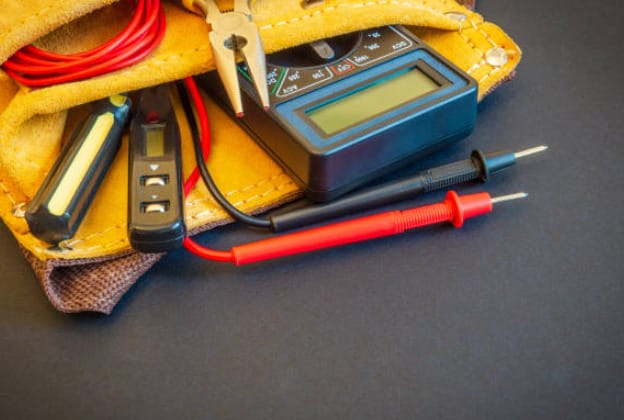
- A digital multimeter – Now, this isn’t just any multimeter. You want one that can measure at least 20 Amperes. This is crucial for getting accurate readings of your battery’s health.
- A wrench – You’ll remove the battery terminals to check for any drains and need a sturdy wrench. Sizes like 8 and 10 millimeters are typically what you’ll need. They’re pretty standard and should fit most battery terminals.
- A pair of pliers – These aren’t just any pliers, though. You’ll be using them to carefully remove the fuse from the fuse panel of the battery. This step is key in checking the right components and not missing any potential issues.
With these tools in hand – a quality digital multimeter, a reliable wrench, and a sturdy pair of pliers – you’re all set to test for battery drain. Let’s get to work!
How to Check Car Battery Drain with a Multimeter
We’re diving into how to troubleshoot a pesky problem: parasitic drain on your vehicle. And the best part? We’re doing it without disconnecting the battery.
This is crucial for newer models where you don’t want to lose computer or sound system settings. Let’s roll up our sleeves and get to it.
Step 1: Ruling Out the Battery
- We need to ensure the battery isn’t the issue. Normally, you’d disconnect it overnight and see if the car starts in the morning.
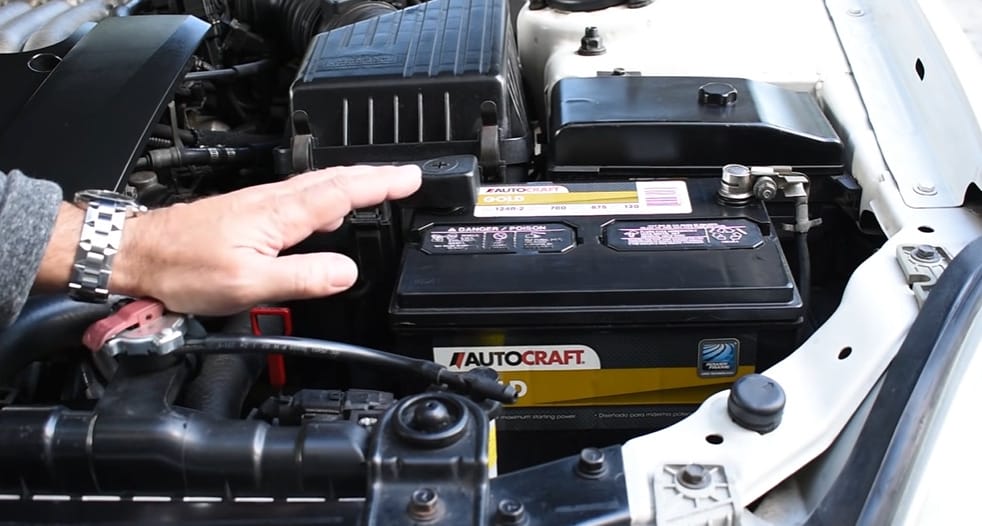
- But to avoid losing settings, you can use a battery analyzer at auto parts stores or online to check the battery’s health.
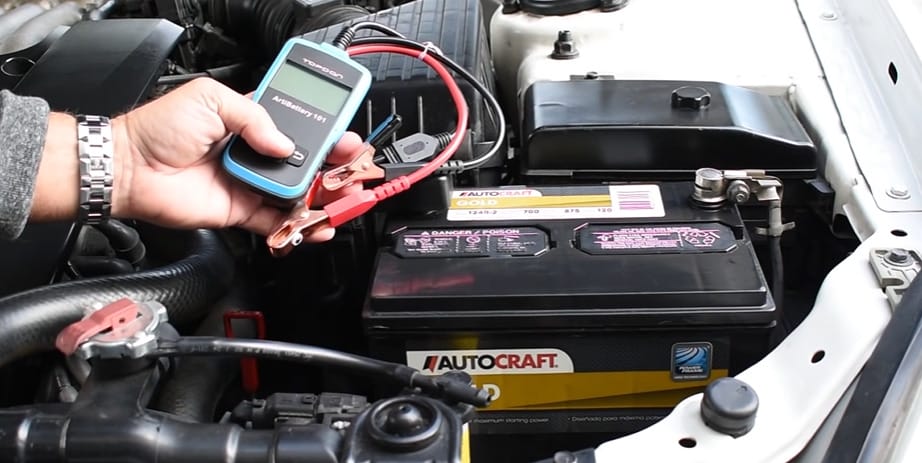
Step 2: Setting Up Your Test
- Grab a digital multimeter and some jumper wires. Put it on DC amps, 10 amp setting.
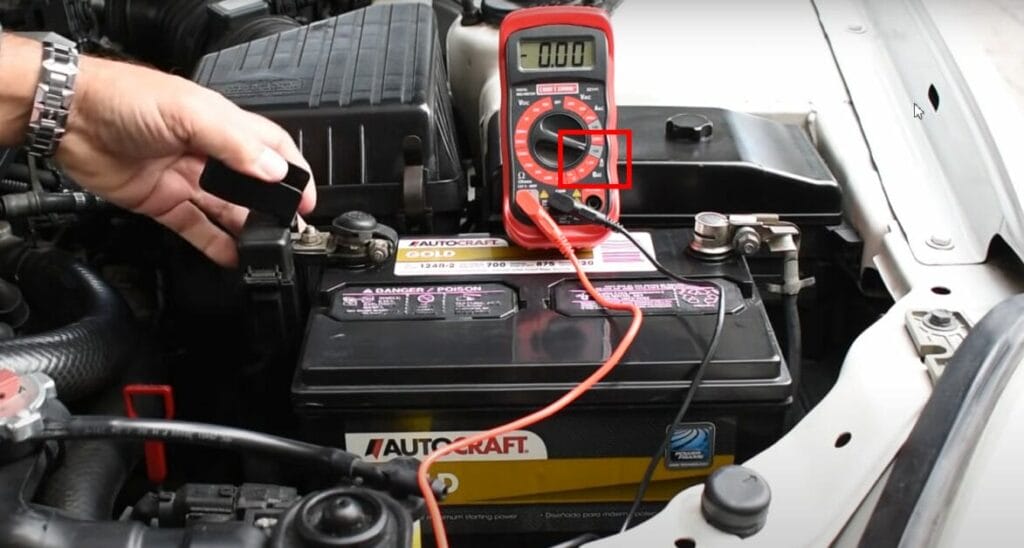
- Ensure there’s no hood light in your vehicle, which can give false readings.
Step 3: Connecting Your Multimeter
- Attach one alligator clip of your jumper wire to a secure spot on your battery clamp.
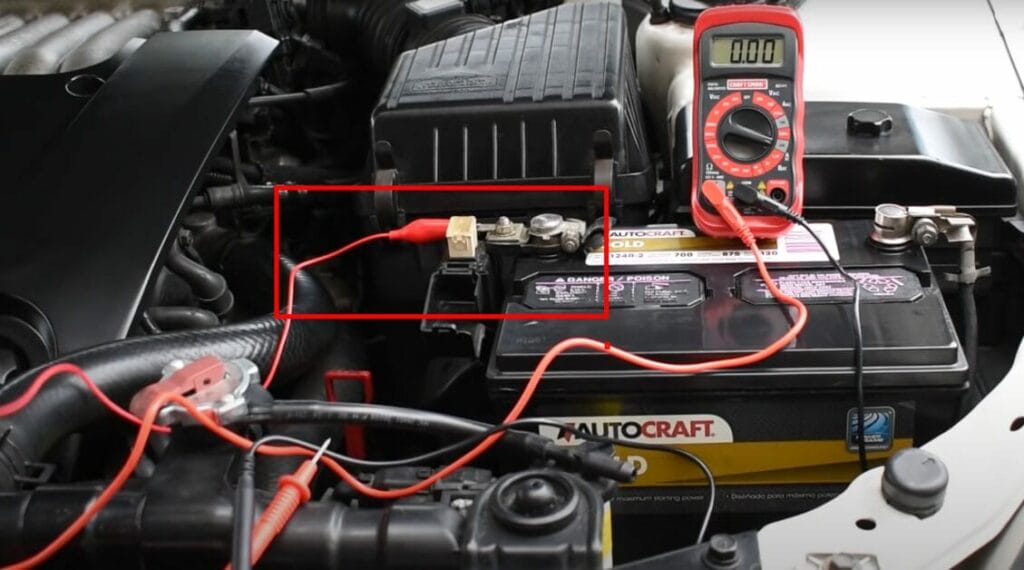
- Connect the positive lead of your multimeter to the battery post.
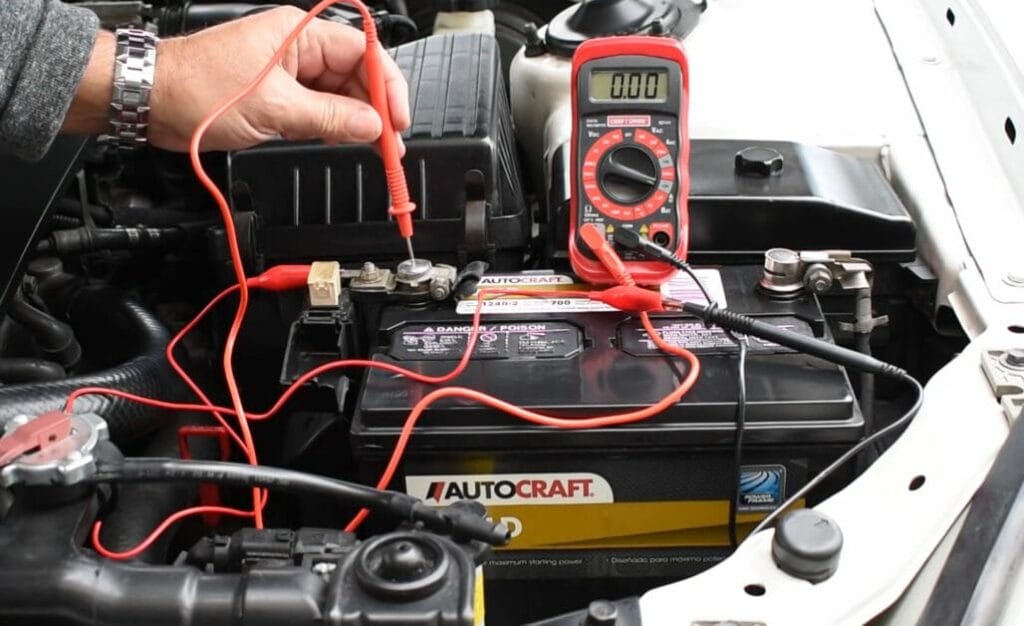
- Loosen the nut on the clamp, then slide the clamp off the post, ensuring the jumper wire maintains the connection.
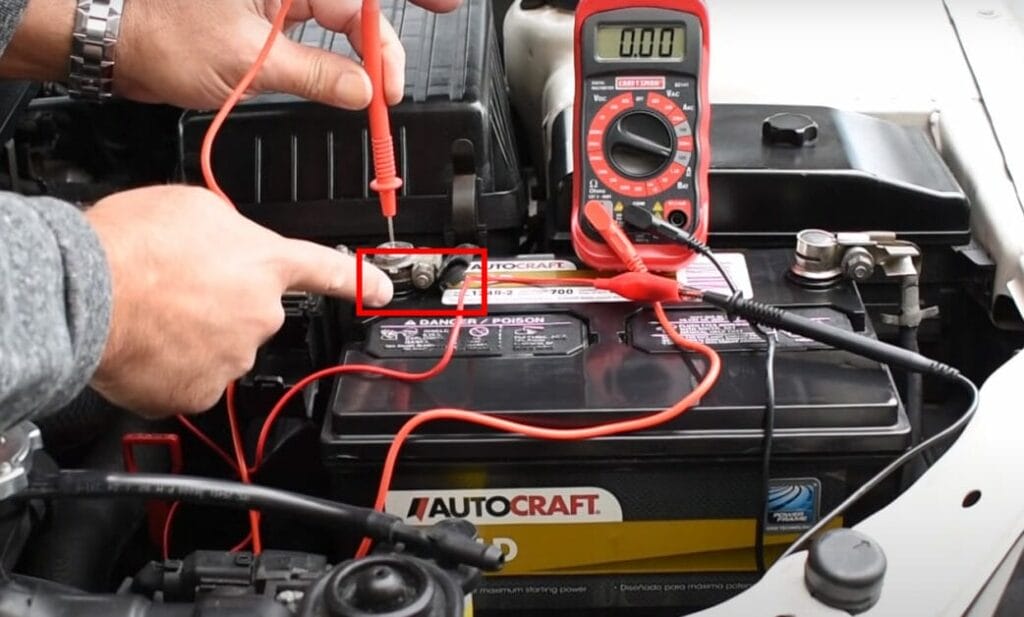
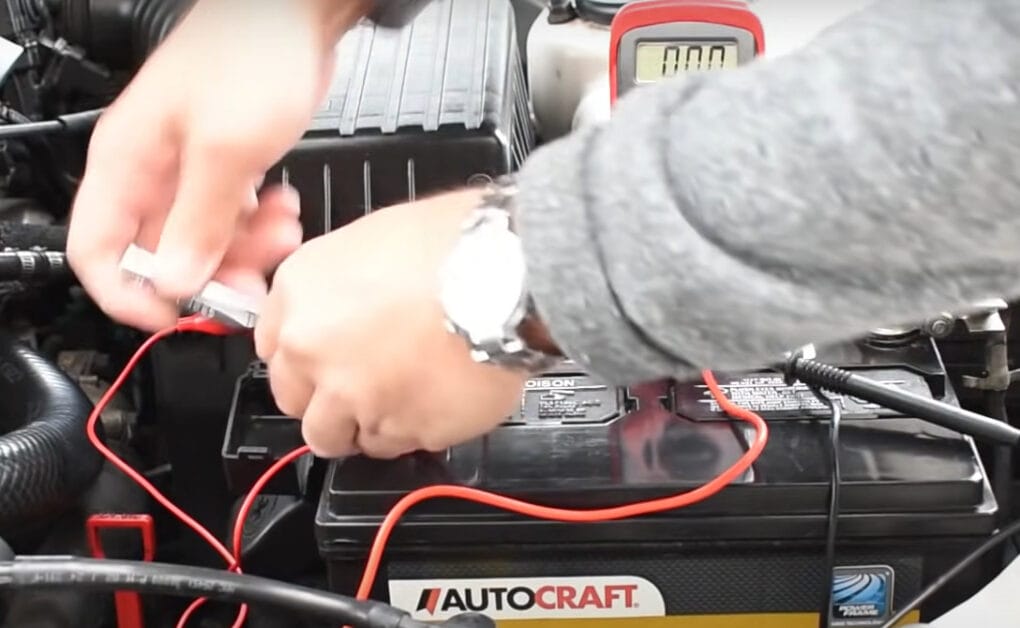
Video | electronicsNmore
Step 4: Conducting the Test
- Observe the current on the multimeter. You want it to be under 50 milliamps. If it’s higher, there’s a drain somewhere.
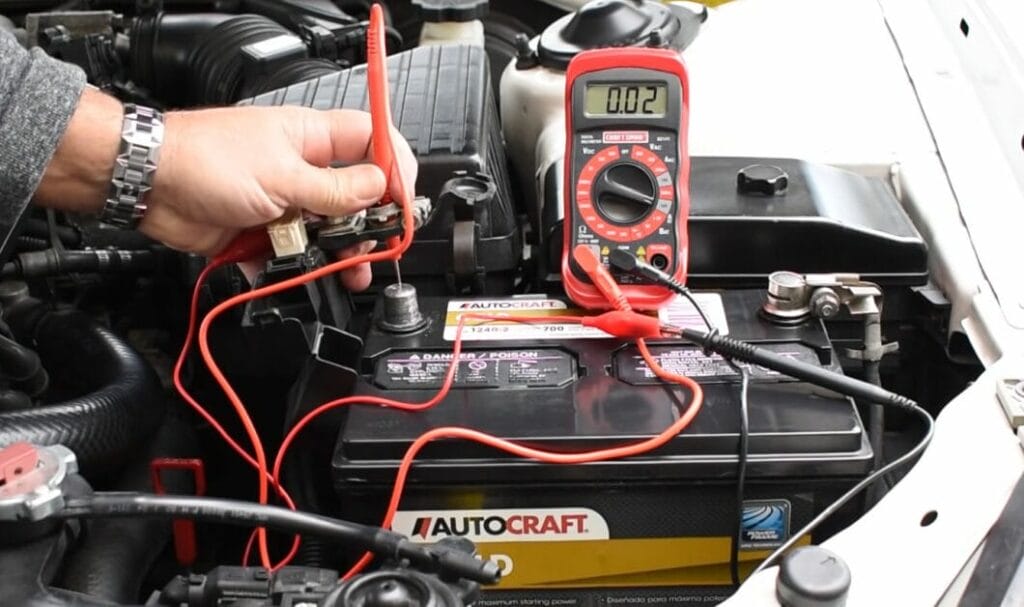
- Pull out each fuse individually with the multimeter still connected (except the ECM and sound system fuses). Keep an eye on the meter for any significant drop in current.
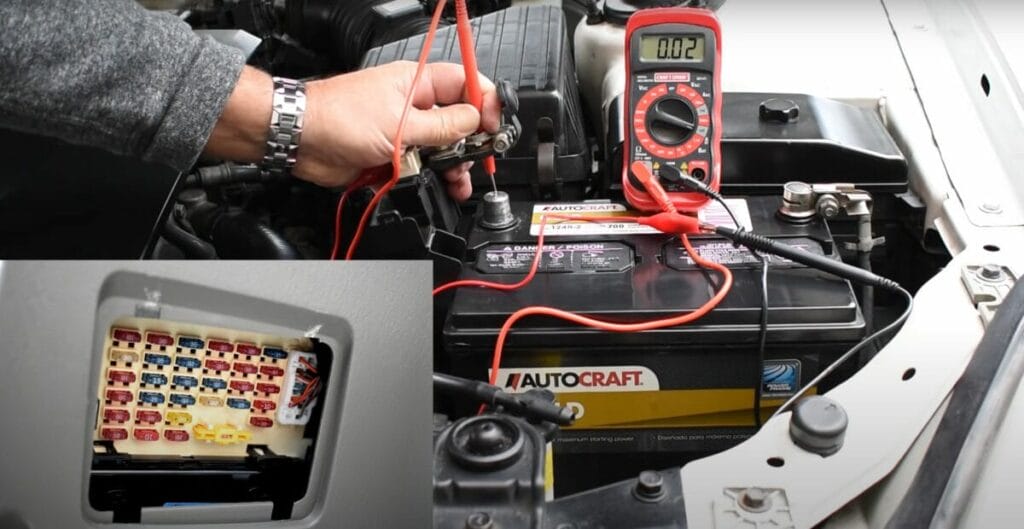
- If no fuse seems to be the problem, disconnect the wiring from your alternator. A faulty diode in the alternator can cause a battery drain.
- You might need to check the sound system fuse if the drain persists.
And that’s how you track down a parasitic drain without losing your vehicle’s settings. I hope these tips help you out. Remember, it’s all about being patient and systematic. Good luck, and thanks for watching!
Troubleshooting Common Problems During Battery Drain Testing
Let’s dive into some common hiccups you might encounter while checking your car’s battery drain with a multimeter and how to steer through them smoothly.
Remember, it’s all about understanding the issue and applying some know-how.
Problem 1: No Reading on the Multimeter
- Symptoms: You’ve set up everything, but the multimeter screen is as blank as a starless night.
- Solution: First, ensure your multimeter is turned on and set to the correct setting – we’re looking for amps here. If it’s still not showing anything, double-check your connections. The probes should be firmly in contact: red probe to the negative battery post and black probe to the negative cable. If it’s still a no-show, your multimeter’s battery might be the culprit, so give that a check!
Problem 2: Erratic Multimeter Readings
- Symptoms: The multimeter numbers jump around like a kangaroo on a trampoline.
- Solution: This usually means there’s a loose connection somewhere. Wiggle those probe contacts a bit and ensure they’re making solid contact. If that doesn’t work, inspect the multimeter leads and probes for damage – sometimes, they can be sneaky troublemakers.
Problem 3: Unexpectedly High Reading
- Symptoms: Your multimeter is showing a reading that’s off the charts, way higher than the expected 50 mA.
- Solution: This could mean a serious drain somewhere. Start by turning off all the electrical accessories in your car – yes, even that cool LED light strip you installed last summer. If the reading is still high, begin the fuse-pulling process. Pull out one fuse at a time and watch the multimeter. When the reading drops, you’ve found your energy-hungry culprit.
Problem 4: Multimeter Shows a Drain, But Everything Seems Fine
- Symptoms: The multimeter indicates a drain, but you can’t find any issues with your fuses or connections.
- Solution: Sometimes, what seems like a drain is just your car’s computers waking up. Give them a bit of time (about 30 minutes) to go back to sleep, then check the reading again. If it’s still showing a drain, it’s time to play detective and check for any aftermarket gadgets or wiring that might be causing the issue.
And there you have it – your troubleshooting guide for when things get a bit tricky. Patience and attention to detail are your best tools in any DIY situation. Happy fixing!
Regular Battery Maintenance Schedule
Let’s roll up our sleeves and get into some smart tips for keeping your car battery in tip-top shape. Here’s a simple, straightforward schedule to keep your battery running smoothly.
| Frequency | Maintenance Task | Details |
|---|---|---|
| Weekly | Visual Inspection | Check for corrosion, cracks, and loose connections. |
| Clean Terminals | Clean any corrosion with a baking soda-water mix and a toothbrush. Rinse and dry thoroughly. | |
| Monthly | Voltage Check | Use a multimeter to ensure the voltage is around 12.6 volts. |
| Tighten Connections | Make sure the battery terminals and cable clamps are secure. | |
| Seasonally | Professional Load Test | Have a professional assess the battery’s charge-holding capacity under different conditions. |
| Check Battery Fluid Levels | For maintenance-type batteries, ensure adequate fluid levels, topping up with distilled water if necessary. | |
| Annually | Full Professional Inspection | Get a comprehensive check from a professional for hidden issues. |
| Replace if Necessary | If the battery is 3-5 years old, get it tested and replace it if needed. |
And there you have it – a simple, practical schedule to keep your car battery in great shape. Regular maintenance not only extends the life of your battery but also keeps you from being stranded. So, set those reminders and keep your battery happy!
Frequently Asked Questions
- Can I Check for Battery Drain If I’m Not a Car Expert?
- Absolutely! Anyone can check for battery drain with a multimeter and some basic instructions. Just follow the steps carefully, and don’t rush. Safety first!
- Will Disconnecting the Battery Reset My Car’s Computer?
- Yes, disconnecting the battery can reset your car’s computer systems. So, be aware that you might need to reset some settings afterward, like your radio presets.
- Is It Safe to Use a Multimeter on My Car Battery?
- Using a multimeter is generally safe if you follow the instructions and take necessary precautions, like wearing protective gloves and ensuring the car is off.
- What Are the Risks of Not Fixing a Battery Drain?
- Ignoring a battery drain can lead to a dead battery, leaving you stranded. Over time, it can also reduce the overall lifespan of your battery.
- What’s the Difference Between a Voltage Test and a Drain Test?
- A voltage test measures how much power your battery has, while a drain test measures if there’s any unnecessary power being drawn from the battery when the car is off.
References
Organizations:
- SAE International. https://www.sae.org/
- The Battery Council International (BCI). https://batterycouncil.org/
- Automotive Service Excellence (ASE). https://www.ase.com/
Books:
- “Automotive Electrical and Engine Performance” by James D. Halderman
- “Advanced Automotive Electricity and Electronics” by Michael Klyde and Kirk VanGelder
Website Resources:
- CarCare.org. https://www.carcare.org/
- Autobatteries.com. https://www.autobatteries.com/
- AA1Car.com. https://www.aa1car.com/
Video References:
electronicsNmore
